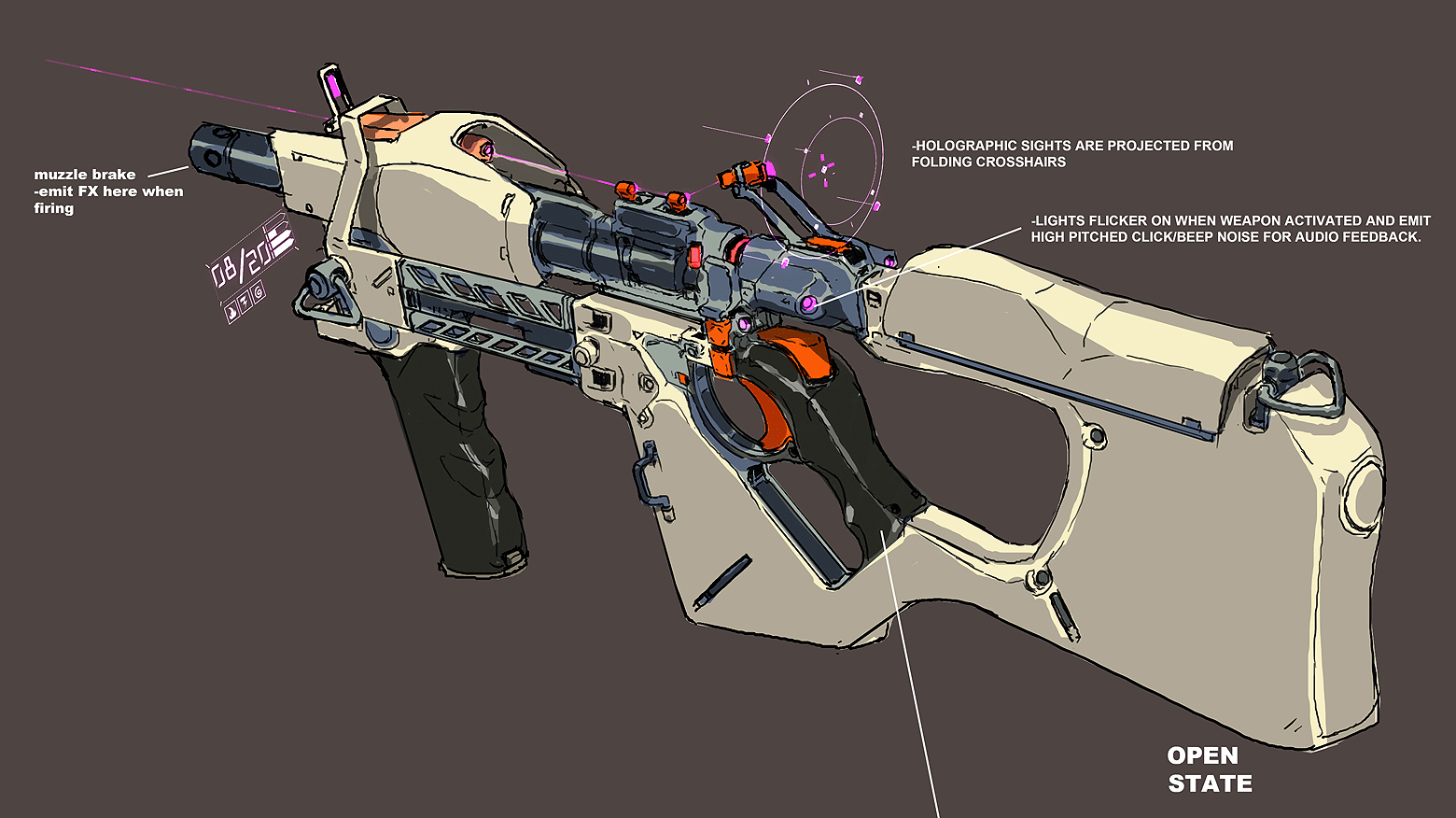Ease Not Accuracy
VR can be incredibly immersive, but it can also be incredibly clunky. Despite having ‘direct’ head and hand input into the virtual world, there’s still several layers of abstraction separating players and the world before them. Thoughtfully designing the ways in which players interact with the virtual world is key to not breaking those magic moments of immersion. In order to do this, you’re better off helping players do what they intend to do, rather than responding to input as a perfect simulation, says Stormland’s Lead Designer, Mike Daly.
“Much like controlling a character in a [non-VR] game, we found that the [interactions which feel best] aren’t the ones where the game literally honors the inputs one-to-one, but instead intuits what the player is trying to do and helps them do it. This is most apparent when picking things up—[Stormland doesn’t] get too picky about having [the player’s] hand close enough or the right orientation; we generally try to make the interaction work in as many circumstances as possible.”
Easier said than done, of course. While in a non-VR game it’s, for instance, straightforward to define a radius around an object within which a player can ‘press X to pick up’, helpful mechanics are much more challenging in VR because of the breadth of player agency.
“Since we tried to keep so many of the game’s controls as intuitive in-world interactions, that meant detecting unambiguous and intuitive gestures. This was harder than we thought as each player interprets the position or motion required to perform an interaction slightly different. You have to consider all the different conditions under which players might want to perform the gesture,” Daly explained. “For example, you can toggle [the scanner] by tapping the side of your visor with your index finger. The variety of positions, orientations, and speeds at which various players attempted this gesture was quite surprising, and our first several tries at detecting this gesture didn’t register at all for some players.”
For Stormland, understanding player intent meant building invisible logic into the game to represent both the actual position of the player’s hand and the ‘intended’ position of the hand in order to make interactions look and feel good. Insomniac provided Road to VR with a glimpse of these systems in action:
If you’re not sure what’s going on here, Insomniac explains:
“This shows debug information showing what is happening under the hood when you interact with a world object. There are two spheres that control the boundaries of your hand transitioning from your controller space to the object space as well as an additional sphere that shows the real world location of your hand’s controller position. It also gives various information on data variables that drive the animation of the hand.”
“The best place to put your polish is where you expect players’ attention to be,” Daly says. “In many cases, this is the hand-to-world interactions. These interactions are worth the effort to make them look and sound as good as possible because of both the player’s attention on them and the frequency & regularity at which they occur. The time when it’s passable [in a VR game] to have objects blink into your hands or your hand snap between poses is behind us.”



